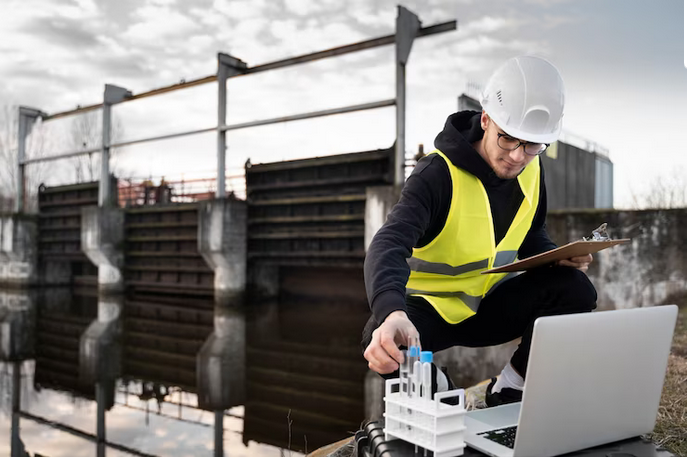Introduction
Soakaway testing is a crucial aspect of assessing soil suitability for drainage systems, ensuring effective water management in construction projects. Understanding the process and considerations involved in soakaway testing is essential for engineers, developers, and regulatory bodies. In this guide, we will explore the key steps and considerations for navigating soakaway testing to achieve optimal results.
Understanding Soakaway Testing
Soakaway testing involves evaluating the infiltration rate of soil to determine its suitability for soakaway installation. This process is essential for designing drainage systems that can effectively manage surface water runoff and prevent issues such as flooding and soil erosion. By conducting soakaway testing, engineers can assess soil permeability and make informed decisions about the design and sizing of soakaway systems.
Step 1: Site Assessment
The first step in soakaway testing is conducting a comprehensive site assessment. This involves evaluating the topography, soil composition, and existing drainage infrastructure. Understanding the characteristics of the site helps determine the locations for conducting soakaway tests and provides valuable insights into potential challenges and constraints that may affect the testing process.
Step 2: Test Pit Preparation
Once suitable locations for testing have been identified, test pits are excavated to assess soil infiltration rates. The dimensions of the test pit typically follow standardized guidelines, with a typical size of one meter square and one meter deep. Careful preparation of the test pit ensures accurate results and allows for consistent testing across different locations within the site.
Step 3: Conducting Percolation Tests
Percolation tests are performed to measure the rate at which water infiltrates into the soil within the test pit. This involves filling the test pit with water and monitoring the water level over a specific time period, usually 24 hours. The rate of water infiltration is then calculated based on the change in water level over time. Conducting percolation tests at multiple locations within the site provides a comprehensive understanding of soil permeability and variability.
Step 4: Analyzing Test Results
Once percolation tests are complete, the results are analyzed to determine soil infiltration rates and suitability for soakaway installation. The data collected during testing is compared to regulatory standards or guidelines to assess compliance and inform design decisions. Factors such as soil type, seasonal variation, and water table depth are taken into account when interpreting test results to ensure accurate conclusions.
Considerations for Soakaway Testing
Several considerations should be taken into account when conducting soakaway testing:
- Soil Type: Different soil types have varying levels of permeability, which can affect infiltration rates. It is essential to consider soil composition when interpreting test results and designing soakaway systems.
- Seasonal Variation: Soil moisture content can vary seasonally due to factors such as rainfall and temperature. Conducting soakaway tests at different times of the year provides a more comprehensive understanding of soil permeability and ensures accurate results.
- Water Table Depth: The depth of the water table relative to the bottom of the test pit can impact infiltration rates. High water tables may inhibit water infiltration and indicate poor drainage conditions, affecting the suitability of the site for soakaway installation.
- Regulatory Compliance: Soakaway testing must comply with local regulations and standards to ensure that drainage systems are designed and installed correctly. Adhering to regulatory requirements helps prevent environmental damage and ensures the long-term effectiveness of drainage infrastructure.
Conclusion
In conclusion, navigating soakaway testing requires careful planning, execution, and analysis to assess soil suitability for drainage systems accurately. By following the key steps outlined in this guide and considering important factors such as soil type, seasonal variation, and regulatory compliance, engineers and developers can obtain reliable data to inform soakaway design and sizing decisions. Effective soakaway testing is essential for ensuring proper water management, preventing drainage issues, and promoting sustainable land development practices. By prioritizing thorough testing and adherence to best practices, construction projects can mitigate risks and contribute to the resilience and longevity of drainage infrastructure.





Comments